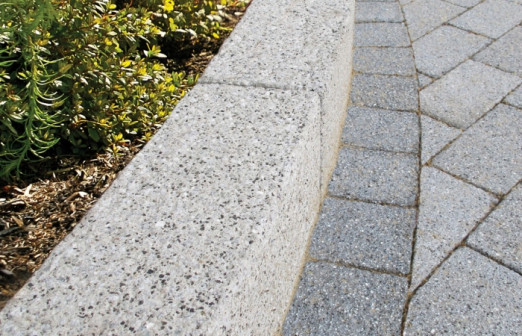The Analog Devices Building at the University of Limerick was constructed as part of the ground-breaking Bernal Project and was since awarded the Irish Building Project of the Year at the Irish Building and Design Awards 2016 in Dublin. Irish architect, Brady Shipman Martin, was appointed to design the external landscape and Tobermore helped make their job easier with the provision of an attractive paving solution that complemented the distinctive new building whilst providing continuity with the other areas on campus.
The Bernal Project was a €54 million investment in research excellence at the University of Limerick. The initiative was named after John Desmond Bernal who was born in Tipperary in 1901 and went on to become one of Ireland’s most influential scientists of the 20th century. The substantial investment funded the expansion of the existing research capacity and the construction of a state-of-the-art new building for the Applied Sciences and Engineering faculty at the University, the recruitment of ten world-leading professors and the provision of a start-up fund to support their teaching and research activity. State contributions and University funding formed 30% of the €54 million and the remaining 70% was funded philanthropically, including a significant donation directly from Analog Devices.
Manuel Smalis, Landscape Architect at Brady Shipman Martin, explained that the overall objective of the project was to have the facility recognised as a world-leading research centre that will deliver real impact for Ireland. On a design level, Manuel outlined that Brady Shipman Martin’s job was to “create a high quality hard landscape that would complement the existing campus and offer a good lifestyle. We also wanted to achieve a low maintenance space with materials that would provide a low carbon footprint.”
RKD’s building design was very unique and modern in style and therefore an aesthetically pleasing hard landscaping method was needed to make the external materials on site come together. Paving was decided as the most appropriate hard landscaping material as Manuel commented: “This decision was very much based on aesthetics as we knew paving could provide a visually attractive landscape.”
Already familiar with Tobermore’s superior product quality, Brady Shipman Martin liaised with Tobermore’s ROI Sales team to source a suitable paving product for the project. Manuel noted what impressed him most about Tobermore paving: “The high quality finish, the environmental benefits and the retention of aesthetics over time exceeded expectation.”
Tobermore’s hugely popular Tegula block paving was selected as the best solution for the site. Tegula is manufactured with an aged, antique finish that creates a charming, traditional look for any application it is used on. Manuel commented: “We were impressed with the unique look that Tegula offered and we knew it would complement the surrounding site and provide continuity between the different areas of the campus.” Tegula was specified in the understated colours of Natural and Charcoal and laid in a wide colour band pattern reaching from one end of the building to the other, adding interest to the site. This colour choice and pattern was a wonderful accompaniment to the brick and contemporary grey cladding on the Analog Devices Building.
Robert Reidy, Director of Buildings and Estates at the University of Limerick commented on the result and his hopes for the facility: “The iconic design of the Analog Devices Building makes it a stand out building on the University of Limerick campus and the research work which will be carried out in the building will significantly support Ireland’s national research priorities and contribute to the economic development of the country.” (University of Limerick News Online. University of Limerick, 2016).
Manuel commented: “Brady Shipman Martin is very proud to have been involved in the award-winning design scheme and it’s very pleasing to see how well our landscape design was brought to life on site.
“I would definitely recommend Tobermore paving products and will be using them again in future.”
The project was successfully delivered in 2016 and is hoped to significantly support Ireland’s national research priorities and contribute to the economic development of the country.
.jpg)

